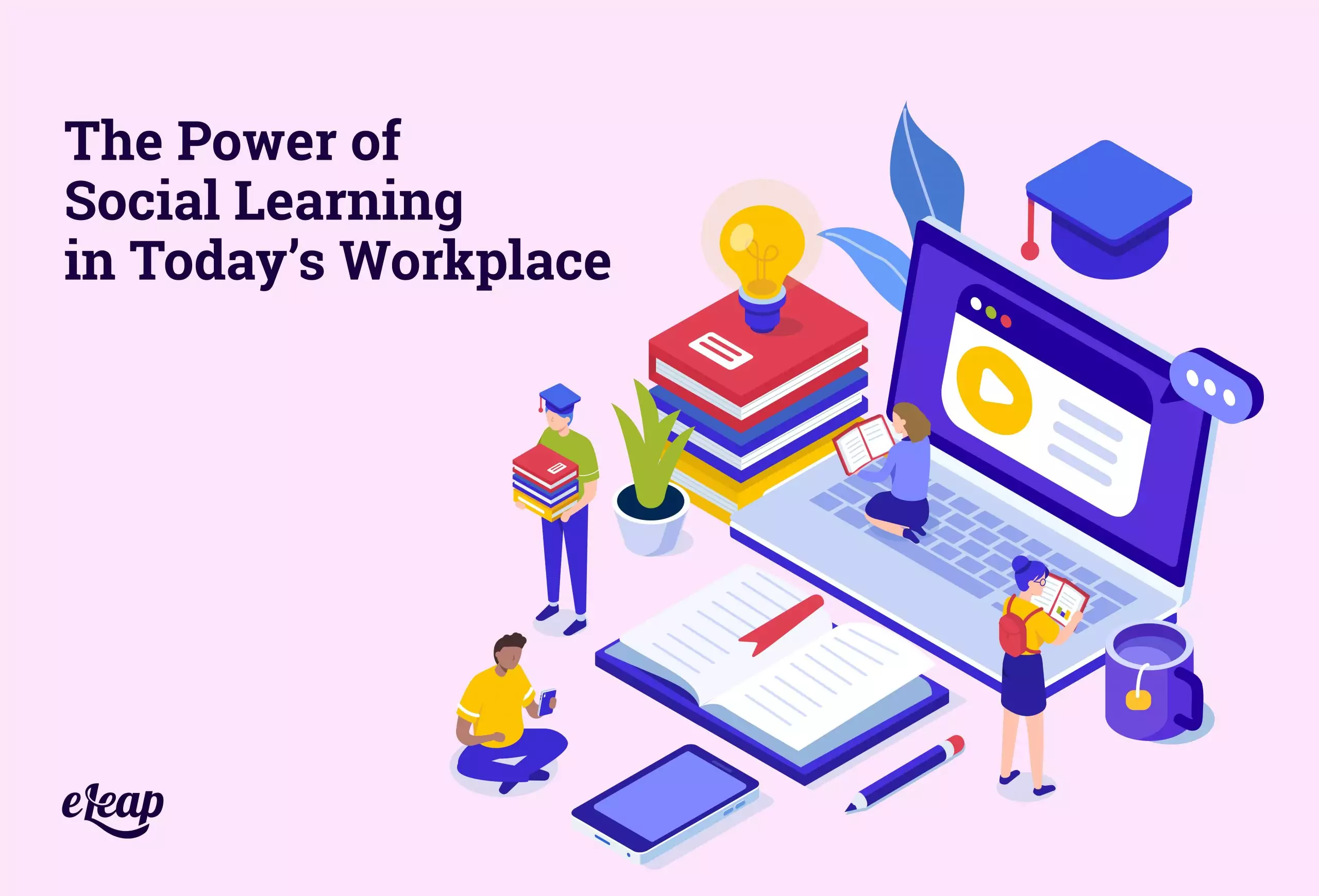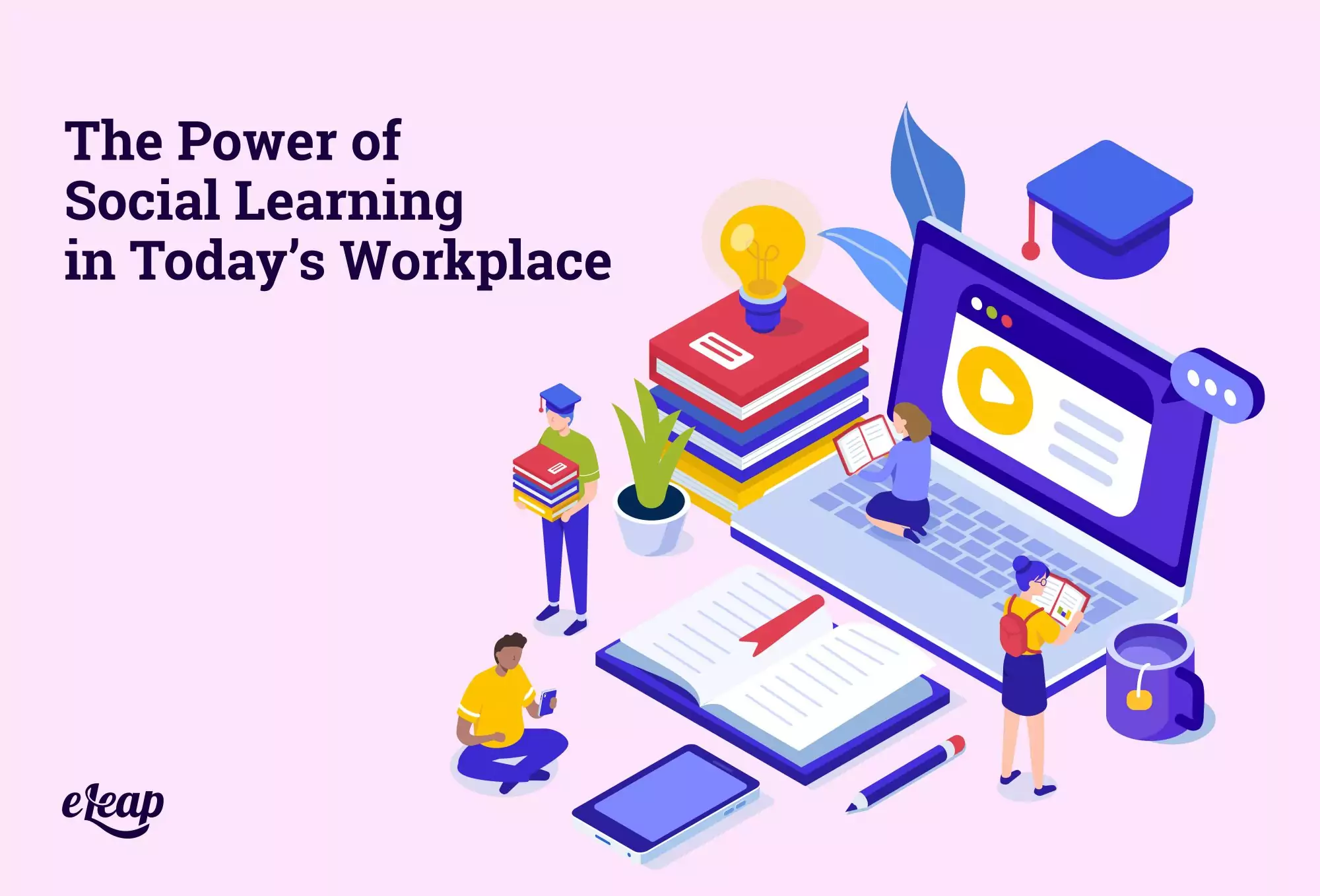The Power of Social Learning in Today’s Workplace

When you think of learning in the workplace, chances are good you picture something formalized. An employee uses the learning management system to complete a course, for instance. Or maybe you think of a new hire shadowing someone more experienced as they learn the ropes. Humans have always learned through social means, and that is not about to change. The good news is that you can tap into the benefits offered by social learning to help drive improved outcomes within your organization. You just need to know a bit more about how it all works.

Those are certainly valid examples of learning, but, today, there are many other options. For instance, did you know that up to 90% of the learning that occurs within your business is informal? In most cases, it is done socially, from person to person.
What Is Social Learning?
First, let’s define social learning. What is it? Technically, it is any situation in which someone learns from someone else. This could be something as simple as someone asking another employee how to do something. That employee explains what to do or shows them how it is done, and the first employee learns.
In today’s technology-driven world, though, social learning occurs in many additional ways. For instance, we learn through social media, through watching YouTube videos, from text messages with coworkers, and more. It occurs when we read content authored by others (so-called user-generated content).
Another example is on-the-job training. Job shadowing, mentoring, new hire walkthroughs – these are all examples of social learning in action.
The Benefits of Social Learning
While it is easy to see that we all learn socially, what are the benefits for an organization offered by implementing these solutions within the workplace? In other words, why bother when you already have formalized learning plans? Many benefits exist with social learning, including the following:
- The ability to ask questions and receive answers at the point of need. Not only does that ensure timely resolutions to questions, but it provides just-in-time training that employees absorb well.
- There is little to no wasted time. Social learning is agile and fast, often far faster than what is possible with any form of formalized learning.
- Social learning through digital channels can make the process of asking questions less daunting for employees who feel self-conscious or intimidated, ensuring that everyone has the opportunity to ask and learn.
- Create a knowledge-base online. When questions are asked and answered digitally, the responses can be stored online creating a type of FAQ or knowledge-base that facilitates further learning and development for other employees.
- Social learning of all types can build stronger bonds between employees, managers, and others. This also works in larger groups, such as on discussion boards, and can help you create a more cohesive team.
- Leverage the benefits of mentorship. Mentoring is a type of social learning and it offers powerful, compelling benefits all its own.
- You improve collaboration and communication. Social learning hinges on people’s ability to communicate and come together, enhancing those skills considerably.
- It’s trackable and measurable. This is particularly true when you tie social learning into a cloud-based learning management system, giving you the ability to monitor and manage learning while helping employees become their best selves.
Those benefits should be compelling enough to tempt virtually any organization into giving social learning a shot. How do you do that, though? Below, we’ll discuss a few options for harnessing the power and potential offered.
Click here to view an Employee Development eBook.
How to Implement Social Learning in the Workplace
Ready to enjoy the benefits offered by social learning? Not so fast. First, you need to figure out how to embed it within your organization. Humans are social creatures, though, so this should be simple, right? It is actually more complicated than many decision-makers realize.
Overcome the Trust Issue
First and foremost, you may find that you need to overcome your employees’ learned distrust of sharing things in a corporate environment. Socialization has often been demonized. Employees have been told not to share, taught that social interaction was a waste of resources. It takes time and diligence to overcome that.
With that being said, the ongoing effects of the pandemic, with so many people still working remotely, may be of benefit here. The effects of being remote make people more accepting of social interaction through whatever means they have available, including social learning platforms.
Give Them Technology
While some forms of social learning do not necessarily require any technological underpinnings – mentorship, on-the-job training, and the like – you will need technology for other options. For instance, if you hope to build an online FAQ or knowledge-base, create a discussion forum for employees, or even just give employees the chance to interact and learn from one another, you’ll need the right tools.
The good news is that these are widely available today. Most of them are free, too. Microsoft Teams, Slack, Trello, and Asana are just some of the options on offer. When comparing your options, shoot for tools that focus on collaboration and communication. File sharing is important too, but without good communication capabilities, file sharing tools are of little real value.
Go Beyond Defined Learning Periods
Most of us learn socially through all our person-to-person interactions. If you want to increase the value of your social learning initiatives without sabotaging yourself by creating something too formal, go beyond the “learning” definition. You can easily create social opportunities through virtual lunches, happy hours, or even virtual water-cooler periods where employees are encouraged to interact and socialize. Learning occurs in all these situations and can help drive important business benefits.
Get Social!
Social learning might sound at first like something that drains resources and wastes time, but it’s how humans are designed to learn. By implementing social learning solutions within your business, you create a more engaged, capable workforce. The key is to find the right mix between LMS features, other options in your technology stack, and less formal social situations that foster communication and connection between employees.